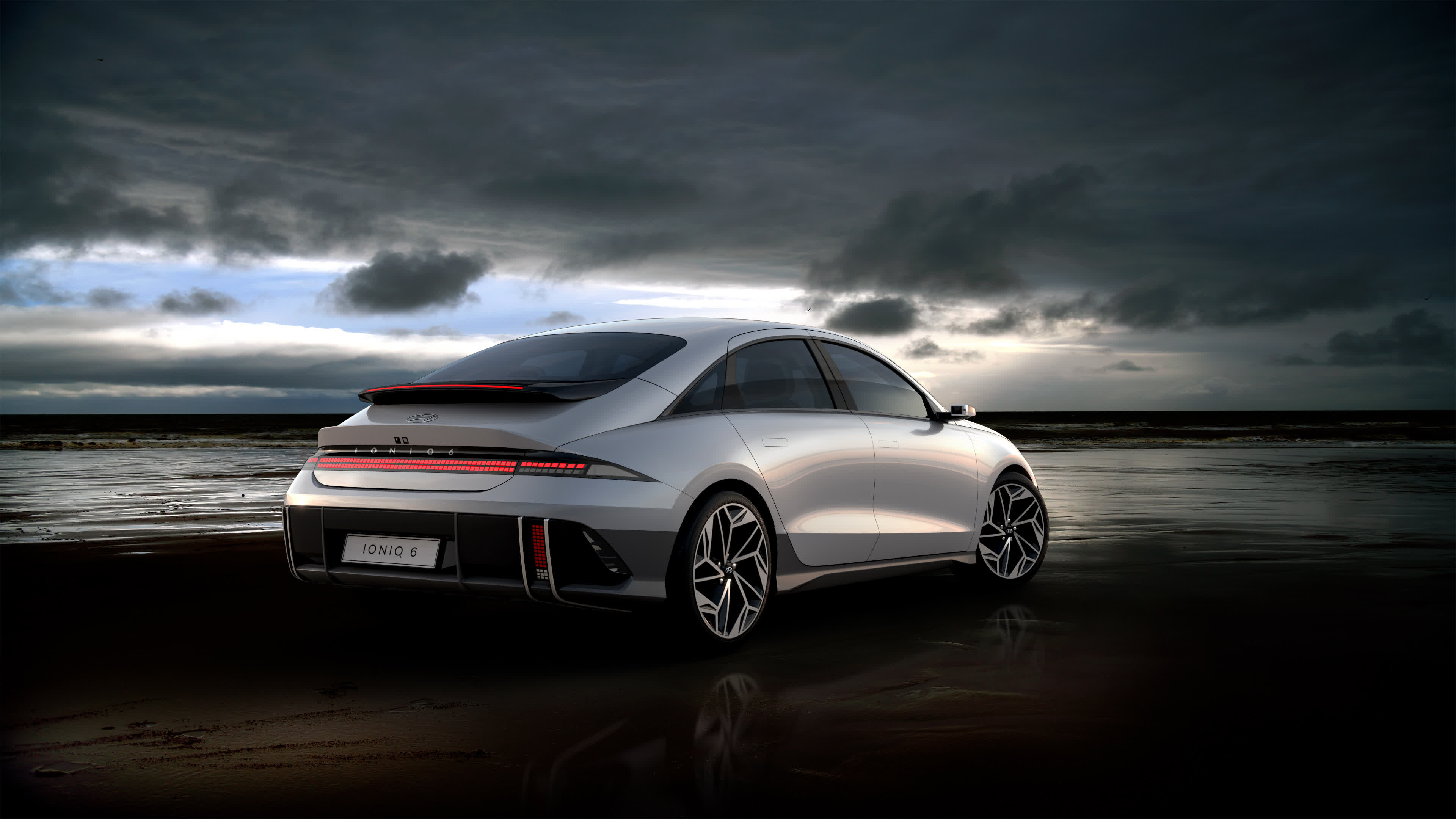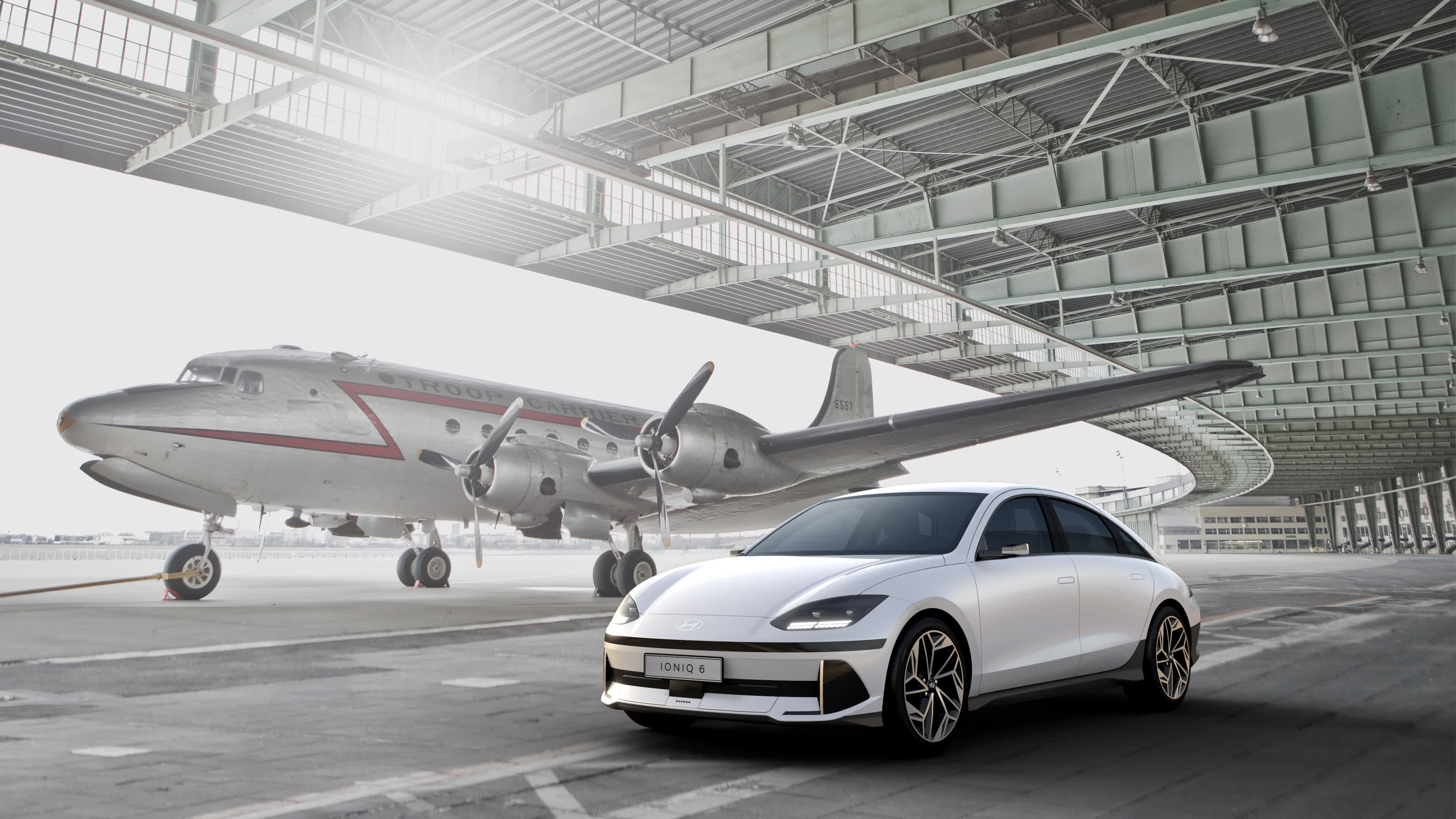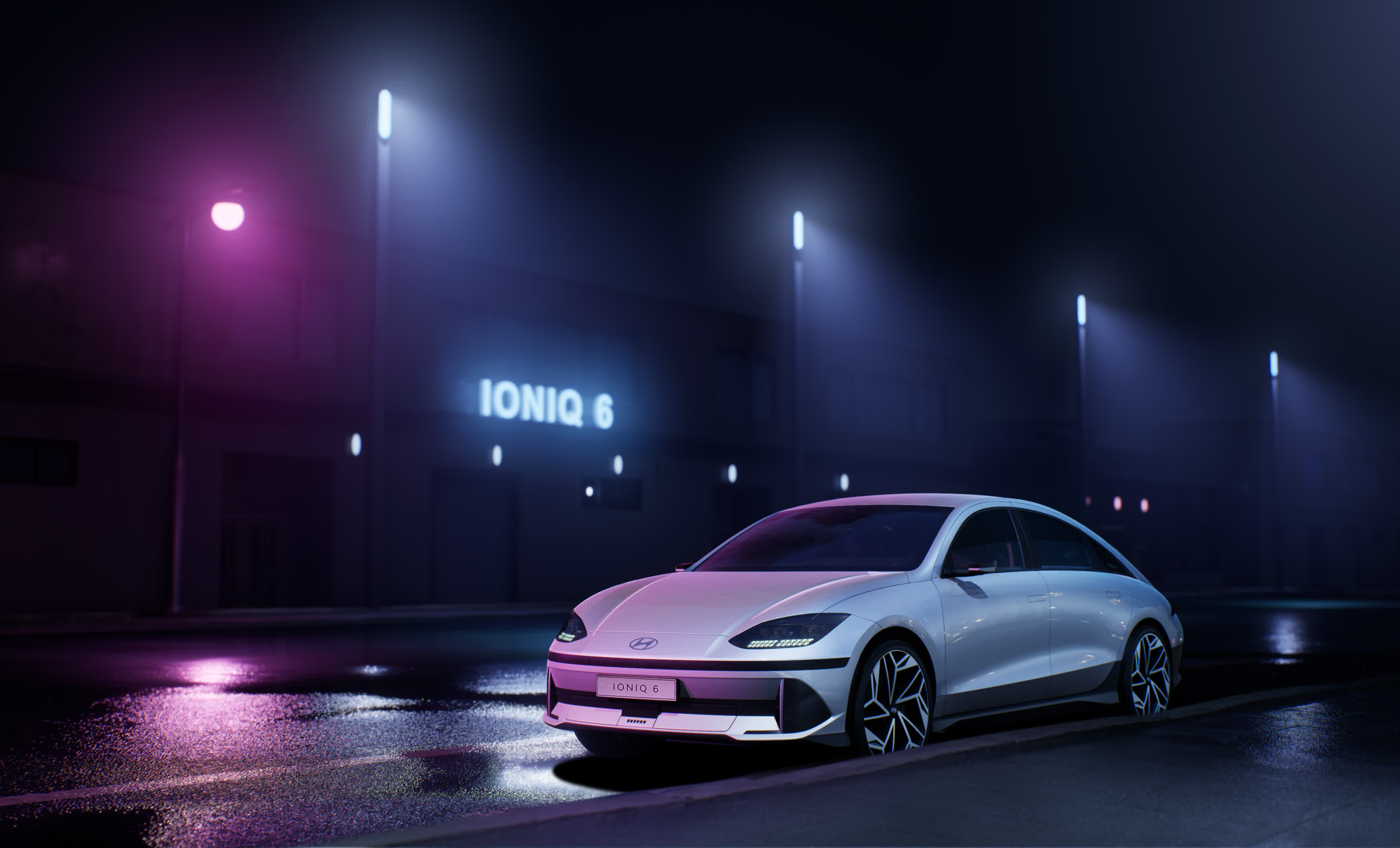Forward-looking: Hyundai is slowly climbing in EV market share in the US and Europe, and it has grand ambitions to capture seven percent of the global EV market by 2030. While a full reveal is scheduled for next month, the South Korean automaker is already teasing everyone with a first look at the much-awaited Ioniq 6 all-electric sedan.
Not too long ago, Hyundai was in talks with Apple to build an electric car. The South Korean automaker seemed interested in lending its expertise to the Cupertino giant, which had long been rumored to be working on a self-driving car. However, those discussions quickly fell apart as Apple executives were worried about information leaks. Similarly, Hyundai executives remained divided on whether or not they saw Apple as a great fit for a potential partnership.
Earlier this year, Hyundai stopped research and development on combustion engines, adding to a growing list of companies committed to going all-electric in the coming years. During its 2022 CEO Investor Day forum, the Hyundai Motor Group presented its bold electrification roadmap through 2030 that includes no less than 17 new battery-powered electric vehicles.

Today, Hyundai offered the first look at its upcoming all-electric sedan, the Ioniq 6. It looks a lot like the Prophecy concept EV it showcased back in 2020, and as noted by Top Gear, it seems to be inspired by classic, streamlined designs from the 1920s and 1930s, such as the Stout Scarab or the Tatra 87.

Details are scarce now, as Hyundai wants to make a full reveal on July 14. Still, the company did tease an ultra-low drag coefficient of just 0.21, which is among the lowest you can get with most cars on the market today. That's thanks to the streamlined design with a low nose and active air flaps, among other things.
The Ioniq 6 shares the same E-GMP platform as the Ioniq 5 crossover, which is rated for up to 315 miles on a single charge, and since the Ioniq 6 is a smaller, low-drag car, it will not only be cheaper but might also offer more range.

The cocoon-shaped interior features sustainable materials, and a couple of touchscreens give it a futuristic look. However, Hyundai design chief Sangyup Lee told Ars Technica the company opted for physical buttons for things like audio and climate controls.
"The touchscreen is great when this car is [in] stationary condition, but when you're moving, touchscreens can be dangerous. So we always think about the right balance, user experience, and the buttons and the combination with the voice activation together. In the future, obviously, voice activation is going to play the major role versus touchscreen, but this is still in transition. For us, anything that relates to the safety, we use hardware. Anything not related to safety will use a touch interface."
Production of the Ioniq 6 is expected to start next month in South Korea. In the meantime, Hyundai is also spending $10 billion to accelerate electrification and autonomous vehicle development in the US, $5.5 billion of which will go towards building a battery manufacturing facility in Georgia.
